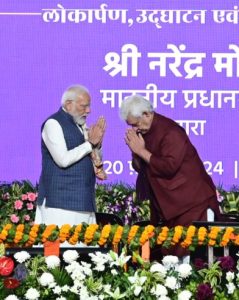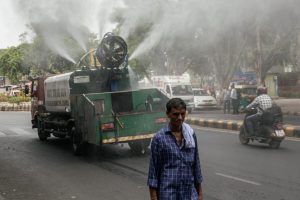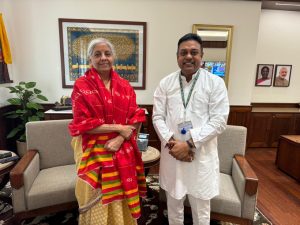Human Development Index scores spotlight shared global challenges

UNDP India Report (Image credit X @UNDP)
By Pradeep Kumar Panda
Bhubaneswar, March 17: In a world marked by increasing polarisation and division, neglecting to invest in each other poses a serious threat to our wellbeing and security. Protectionist approaches cannot address the complex, interconnected challenges we face, including pandemic prevention, climate change, and digital regulation.
Our problems are intertwined, requiring equally interconnected solutions. By adopting an opportunity-driven agenda that emphasises the benefits of the energy transition and of artificial intelligence for human development, we have a chance to break through the current deadlock and reignite a commitment to a shared future.
As per latest Human Development Index, India ranks 134 among 193 nations and India falls behind Bangladesh, Sri Lanka, Bhutan and China. Categorised as ‘Very High’, ‘High’, ‘Medium’ and ‘Low Human Development’, China and Sri Lanka, ranked at 75 and 78, respectively, in the High Human Development category compared to India, which stands at 134. India also ranks below Bhutan (125) and Bangladesh (129), despite all three being categorised under ‘Medium Human Development’.
The 2023/24 Human Development Report (HDR) is titled, “Breaking the Gridlock: Reimagining Cooperation in a Polarized World. Following a stagnation in its HDI value in 2021, India’s HDI value surged to 0.644 in 2022, showcasing improvements across vital indicators including life expectancy, education, and Gross National Income (GNI) per capita. Life expectancy in India rose from 67.2 to 67.7 years, while expected years of schooling reached 12.6, and mean years of schooling increased to 6.57. Additionally, GNI per capita saw a rise from $6,542 to $6,951.
Despite global gains, the HDR highlights persistent challenges, noting that the world has yet to fully recover from the COVID-19 pandemic and other crises. The report warns of a ‘partial, incomplete and unequal’ recovery, exacerbating global inequality and polarisation.
Furthermore, the HDR outlines a concerning trend of rising global inequality, with the gap between the wealthiest and poorest countries widening since 2020. India, along with other countries in South Asia, faces significant losses in HDI due to inequality.
According to the report, while nine in 10 people worldwide endorse democracy, over half of the respondents expressed support for leaders that may undermine it by bypassing fundamental rules of the democratic process.
In addition to this paradox, half of the people surveyed reported having no or limited control over their lives, and over two-thirds believed that they have little influence on their government’s decisions.
Political polarisation in countries is also responsible for protectionist or inward-turning policy approaches which is “starkly at odds with the global cooperation needed to address urgent issues like the decarbonisation of our economies, misuse of digital technologies, and conflict,” the report says while emphasising on the need for united action to tackle global issues.
The Human Development Index (HDI) is a summary measure of average achievement in key dimensions of human development: a long and healthy life, being knowledgeable and having a decent standard of living. The HDI is the geometric mean of normalized indices for each of the three dimensions.
The health dimension is assessed by life expectancy at birth, the education dimension is measured by mean of years of schooling for adults aged 25 years and more and expected years of schooling for children of school entering age. The standard of living dimension is measured by gross national income per capita. The HDI uses the logarithm of income, to reflect the diminishing importance of income with increasing GNI. The scores for the three HDI dimension indices are then aggregated into a composite index using geometric mean. Refer to Technical notes for more details.
The HDI can be used to question national policy choices, asking how two countries with the same level of GNI per capita can end up with different human development outcomes. These contrasts can stimulate debate about government policy priorities.
The HDI simplifies and captures only part of what human development entails. It does not reflect on inequalities, poverty, human security, empowerment, etc. The HDRO provides other composite indices as broader proxy on some of the key issues of human development, inequality, gender disparity and poverty.
Over the years, India’s rank in Human Development Index is worsening which is a big cause of concern. Human Force is becoming liability than asset. We are not able to reap the advantage of demographic dividend.
Subscribe: youtube.com/@TheRaisinaHills
Join: https://whatsapp.com/channel/0029VaFAp9b60eBiuA8v1x0s







